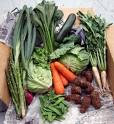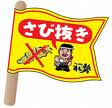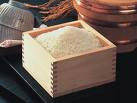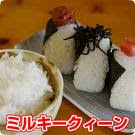::::::::::::::::::::::::::::::::::::::::::::::::::::::::::::::::::::::::::::::::::::::::::::::::::::
Dengaku dance and food
***** Location: Japan
***** Season: Spring
***** Category: Humanity
*****************************
Explanation
quote
Dengaku (田楽)were rustic Japanese celebrations that can be classified into two types: dengaku that developed as a musical accompaniment to rice planting observances
and
the dengaku dances that developed in conjunction with sangaku.
The dengaku celebrated for rice planting was performed by villagers either at the new year or during the planting season in early summer. It was only in the 14th century that these dances were brought to the cities and incorporated into Noh theater, notably by the playwrite and actor Kanami.
The instrument of dengaku is the sasara (a wooden percussive instrument clapper), though there are other instruments that can be used. In the old story of the Eiga Monogatari there is a detailed description of the rice-planting dengaku. After being brought to the aristocrats, dengaku flourished till the end of the Heian Period and became the main performing art of the Kamakura and part of the Muromachi period.
By the end of the Muromachi though, dengaku was eclipsed by sarugaku. Today is barely survives as a folk performing art.
© More in the WIKIPEDIA !
.......................................................................
binzasara (編木 or 板ざさら) ita sasara clappers
is a traditional Japanese percussion instrument used in folk songs, rural dances and kabuki theater. The instrument uses many pieces of wooden plates strung together with a cotton cord. With handles at both ends, the stack of wooden plates are played by moving them like a wave.

sasara ささら / 簓 / 讃良 wooden clappers, bamboo clappers
.......................................
A legend from Akita 秋田県 about shitan 紫檀 red sandalwood
At the time of 崇神天皇 Emperor Sujin Tenno (148BC - 29 - at age 119)
The first use of sasara was at the time of Emperor Suijin in the province of 常陸国 Hitachi (now Ibaraki).
After the defeat of the local chief 悪路王 Akuro-O the army of the emperor wanted to appease his soul. So they planted 1000 heads of deer on a hill and put 1000 sticks of red sandalwood in the ground. After some appeasement rituals the soul was pacified.
. Himemachi Fudo 姫待不動尊 Iwate .
Founded by priest Enchin 円珍 in 807 in order to promote the development of the Northern Provinces in Tohoku.
In 801 the government sent Sakanoue Tamuramaro to subdue chief 悪路王 Akuro-O. The deity Bishamonten was placed in the temple to show their thanks for the victory.
. Legends about Sandalwood .
. Legends from Japan 伝説 - Introduction .
:::::::::::::::::::::::::::::::::::::::::::::::::::::::::::::::::::::::::::::::::::::::::::::::::::
dengaku is a set of dances during the planting season to call the deities to attention. Since the Heian period it is performed in spring. Developed into sarugaku 猿楽(さるがく) "monkey performances" of artistic circus tricks.

一本高足 "one long leg" stilt
One of the performances, "dance on high legs" 高足の舞", represents a dancer on poles which are placed into the field.
Other sources quote the dancers on one or two stilts and performing with poles, stepping hard on the ground to wake it up.
Their costumes where of the color of white and brown, like tofu and miso.
When tofu or konnyaku are put on skewers, they look like they are on stilts, hence the name.
. Sanbasoo 三番叟 Sanbaso Dancer .
sanba sarugaku 三番猿楽 Sanbaso
Dengaku mai 田楽舞 dengaku dance
Performers on sticks, with poles and wooden swords
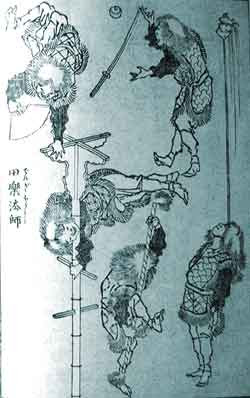
「北斎漫画」九巻、「田楽法師」
Hokusai, dengaku hooshi performers
They represent the marriage of heaven and earth, of thunder and the rice plants (kaminari and inari 雷と稲), therefore when eating eggplant dengaku (nasu dengaku), the word NARI turned NASU and this is still auspicious food.
In spring, the sucessfull marriage of heaven and earth was important to produce a good harvest in autumn.
The deities had to bring the proper amount of rain, and were sometimes represented as snakes, dragond or swords (and thus protective deities of the swordsmith clans, who also step on their fuigo bellows to produce the necessary air).
. . . CLICK here for Photos !
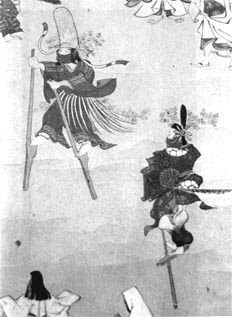
(本田安次 錦正社 「日本の伝統芸能」より)
sangaku 散楽 performing with one stilt and two stilts
all kinds of artistic performances and tricks are shown by a sangaku group, like a circus of modern times.
Performing acrobatic feats on poles above the ground is also part of the training of Shaolin. Practising the balance on one pole is also done.
Reference photos . shaolin and kung fu on poles
.................................................................................

gannin 願人 street performers
. gannin boozu 願人坊主 medicant monks .
Gannin Bozu
:::::::::::::::::::::::::::::::::::::::::::::::::::::::::::::::::::::::::::::::::::::::::::::::::::
FOOD
dengaku 田楽 food on skewers, with misopaste
Usually firm tofu on skewers, grilled with red miso paste from Nagoya.
Also satoimo potatoes, fish and other vegetables are grilled like this.

nameshi dengaku なめし田楽 / 菜飯田楽
a dish of rice with vegetables and
a plate of red miso tofu dengaku
speciality of Aichi prefecture, Toyohashi town
This was a speciality at the Tokaido Station of Yoshida 吉田宿 (Toyohashi).
Also in Aichi at the town of Tsushima 津島市 there is a speciality called
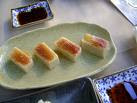
fu dengaku 麩田楽
where fu gluten croutons are fried and eaten with red miso paste.
myooga dengaku ミョウガ田楽 / みょうが田楽 Japanese myoga ginger
Zingiber mioga
. . . CLICK here for Photos !
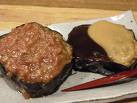
nasu dengaku 茄子田楽 eggplants with miso
an auspicious dish for summer (see above)

toofu dengaku 豆腐田楽 firm tofu on skewers with miso
White miso or red miso can be used.
In Kyoto, there is a special
"Giondoofu" tofu dengaku from the Gion quarters along the shirne Yasaka jinja. The shop "Niken no Chaya" 2軒の茶屋 is especially famous for it. There used to be two tea houses near the Great Gate to Gion Shrine 祇園神社の楼門. One was Fujiya 藤屋, the other Nakamuraya 中村屋. They have been added unter one roof to evade to pay taxes to the shrine and are therefore called "Two tea houses under one roof" (niken chaya 二軒茶屋). They are famous for their tofu dishes.
. . . CLICK here for Photos of the tea shops!
The tofu is stuck on a special bamboo skewer with two open ends, like a "pine needle", matsubagushi 松葉串 (matsuba gushi)
. . . CLICK here for Photos !
When the tofu is grilled on charcoal until halfway done, it is turned upside down and the miso is grilled.
Gion doofu 祇園豆腐 Gion Tofu

It has been prepared since the Edo period. Now only soy beans from Tottori and Hokkaido are used for the Tofu and sweet white miso paste from Kyoto for the dipping. Sometimes spinach leaves or other ingredients are added to the paste.
This tofu became quite famous during the Edo period and even in Edo there opened a tea house to sell it near Yushima, the
Giondoofu Ya 祇園豆腐屋.
There are also
niken chaya mochi 二軒茶屋餅(にけんちゃやもち)
with kinako soybean powder. Made since 1575, originally at two tea shops near the port, Kakuya and Minatoya 角屋と湊屋. The present owner of Kakuya is in the 21 generation and also sells local beer, miso and soy sauce. They also have a small museum of old tools in their shop.
from Ise town, Mie 三重県伊勢市
. . . CLICK here for Photos !
:::::::::::::::::::::::::::::::::::::::::::::::::::::::::::::::::::::::::::::::::::::::::::::::::::::
Takamori Dengaku 高森田楽
The village of Takamori near Mt. Aso is famous for preserving this food tradition.
TAKAMORI DENGAKU HOZONKAI
郷土料理阿蘇高森田楽の里
*****************************
Worldwide use
*****************************
Things found on the way
*****************************
HAIKU and SENRYU
kigo for mid-spring
dengaku 田楽 dengaku dishes
kinome dengaku 木の芽田楽(きのめでんがく)
dengaku with fresh tree sprouts
dengaku yaki 田楽焼(でんがくやき)grilling dengaku
dengaku toofu 田楽豆腐(でんがくどうふ)tofu-dengaku
dengaku sashi 田楽刺(でんがくざし) skewer for dengaku
kigo for all summer
nasubi dengaku 茄子田楽(なすびでんがく)dengaku with eggplants
observance kigo for the New Year
. dengaku matsuri 田楽祭/雪祭り Dengaku dance festival .
Niino no yukimatsuri 新野の雪祭 (にいののゆきまつり)
snow festival at Niino
. Nishiura dengaku 西浦田楽 (にしうれでんがく)
Dengaku dance at Nishiura village .
:::::::::::::::::::::::::::::::::::::::::::::::::::::::::::::::::::::::::::::::::::::::::::::::::::::
田楽もかたき豆腐にかたき味噌
dengaku mo kataki toofu ni kataki miso
dengaku too -
firm tofu and
firm miso paste
Takahama Kyoshi 高浜虚子
The Red Hatcho-Miso from Okazaki is quite firm.
:::::::::::::::::::::::::::::::::::::::::::::::::::::::::::::::::::::::::::::::::::::::::::::::::::::
田楽は昔は目で見今は食ひ
dengaku wa mukashi wa me de ima wa kui
dengaku, well,
in olden times to look at,
now to eat it
anonymous
*****************************
Related words
***** WASHOKU : Dishes from Niigata and Echigo
***** WASHOKU : General Information
:::::::::::::::::::::::::::::::::::::::::::::::::::::::::::::::::::::::::::::::::::::::::::::::::::::::::::::::::::::::::::
[ . BACK to DARUMA MUSEUM TOP . ]
[ . BACK to WORLDKIGO . TOP . ]
:::::::::::::::::::::::::::::::::::::::::::::::::::::::::::::::::::::::::::::::::::::::::::::::::::::::::::::::::::::::::::
